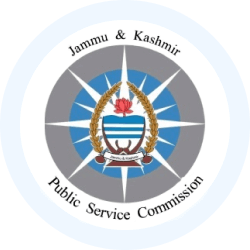JKPSC KAS (Jammu and Kashmir) Exam > JKPSC KAS (Jammu and Kashmir) Notes > JKPSC KAS (Jammu and Kashmir): Preparation Course > Climate of Jammu and Kashmir
Climate of Jammu and Kashmir | JKPSC KAS (Jammu and Kashmir): Preparation Course PDF Download
| Download, print and study this document offline |
Please wait while the PDF view is loading
Page 1 CLIMATE OF JAMMU AND KASHMIR The climate of Jammu and Kashmir, unlike other states of India, shows some distinct characteristics. It ranges from sub-tropical to temperate and Arctic cold desertic climate. Climatic Zones of Jammu and Kashmir ThestateofJammuandKashmirhasadistinctclimaticpatternduetoitsvaried topography.Ithashillyterrainwithhighmountainsandvalleys.TheSouth-Western partofthisstatecomprisedofplainswithlowelevation.As thestateisdividedinto threeregions,namely,Jammu,KashmirvalleyandLadakh,allthethreeregionshave adistinctclimaticzone.These climatic zones are as follows: 1. The Sub-tropical region of Jammu 2. The Temperate Kashmir valley 3. The Arctic cold desert areas of Ladakh Sub-tropical Region of Jammu Thisregionhasvariedtopographylikeplains,valleys,hillsandmountainsofPir PanjalandShiwalikranges.ThisregioncomprisesofKathua,Jammu,Samba Udhampur,Riasi,Doda,Ramban,Kishtwar,RajouriandPoonchdistrictsofthe state. TheSouth-WestpartofJammuregionhasatypicaltropicalmonsoonclimate.The Southernpartsrecordmaximumtemperaturei.e.45°Cinsummerseasonespecially inJunewhichishottestmonthinJammuregion.Duringthisperiodhotdrywinds called‘loo’blow.Januaryisthecoldestmonthinwinterseasonofthisregion.The meanminimumtemperatureoftheregionasawholeremains3°C inJanuary.Butin thismonththemeanminimumtemperaturevariesfrom-1.9°CintheNorthern highaltitudinalareasto7.8°CintheSouthernplains.DuetotheWestern disturbances,amuchlowertemperatureisexperiencedduringwinterseason. Page 2 CLIMATE OF JAMMU AND KASHMIR The climate of Jammu and Kashmir, unlike other states of India, shows some distinct characteristics. It ranges from sub-tropical to temperate and Arctic cold desertic climate. Climatic Zones of Jammu and Kashmir ThestateofJammuandKashmirhasadistinctclimaticpatternduetoitsvaried topography.Ithashillyterrainwithhighmountainsandvalleys.TheSouth-Western partofthisstatecomprisedofplainswithlowelevation.As thestateisdividedinto threeregions,namely,Jammu,KashmirvalleyandLadakh,allthethreeregionshave adistinctclimaticzone.These climatic zones are as follows: 1. The Sub-tropical region of Jammu 2. The Temperate Kashmir valley 3. The Arctic cold desert areas of Ladakh Sub-tropical Region of Jammu Thisregionhasvariedtopographylikeplains,valleys,hillsandmountainsofPir PanjalandShiwalikranges.ThisregioncomprisesofKathua,Jammu,Samba Udhampur,Riasi,Doda,Ramban,Kishtwar,RajouriandPoonchdistrictsofthe state. TheSouth-WestpartofJammuregionhasatypicaltropicalmonsoonclimate.The Southernpartsrecordmaximumtemperaturei.e.45°Cinsummerseasonespecially inJunewhichishottestmonthinJammuregion.Duringthisperiodhotdrywinds called‘loo’blow.Januaryisthecoldestmonthinwinterseasonofthisregion.The meanminimumtemperatureoftheregionasawholeremains3°C inJanuary.Butin thismonththemeanminimumtemperaturevariesfrom-1.9°CintheNorthern highaltitudinalareasto7.8°CintheSouthernplains.DuetotheWestern disturbances,amuchlowertemperatureisexperiencedduringwinterseason. The Temperate Kashmir Valley ThevalleyofKashmirliesbetweenPirPanjalrangeandWesternendoftheGreat Himalayanranges.ThisregioncomprisesofAnantnag,Budgam,Bandipora, Kulgam,Shopian,Pulwama,Srinagar,Ganderbal,Baramulla andKupwaradistricts ofthestate.Julyisthehottestmonthinsummerwhichrecordsthemeanmaximum temperatureinthevalleyofabout27°C.Usually,summersarepleasantinthevalley withshortduration(midMarchtoJuly).Winterseasoninthe valleyisverycoldand oflongduration(NovembertoMarch).Januaryisthecoldest monthwhichrecords themeanminimumtemperatureabout-5°C.Inthewinters,the meanmaximum temperatureremains5°C. The Arctic Cold Desert Areas of Ladakh TheLadakhregionissituatedontherain-shadowsideoftheHimalayanmountains andhashighaltitudinalareas.Itcomprisesonlytwodistrictsnamely,Lehand Kargil.Marchisthehottestmonthinthisregionwhichrecordsthemeanmaximum temperatureabout25.3°Candmeanminimumtemperatureabout10°C.During ApriltoOctober,thebarrenlocationsofLadakhregionremainsverydryandhot. DuetohavingboththeArcticanddesertclimate,Ladakhisknownasthe Cold Desert. Duetoitshighaltitude(3650m),theLadakhplateaurecords theminimum temperaturerangingfrom-20°Cto-40°CfromDecembertoFebruary(inwinters). Januaryisthecoldestmonthofthisregionwhichrecordsameanminimum temperatureofabout-14.4°Candmeanmaximumtemperatureabout-2°C. Local Names for the Seasons of Jammu, Kashmir and Ladakh Region Season Local Term Spring Sont Summer Retkol (Grishm) Rainy Waharat Autumn Harud Winter Wandah Ice Cold Shishur Rainfall Distribution in Jammu and Kashmir JammuandKashmirreceivesabout103cmofitstotalannualprecipitation.The precipitationoccursintheformofrainandsnow.TheWesternDisturbancesbring heavysnowfallinthestateduringwinterseason.Theheaviestsnowfalloccursinthe monthsofJanuaryandFebruary.Rainfallinthestatevaries duetoitsvaried topography. Page 3 CLIMATE OF JAMMU AND KASHMIR The climate of Jammu and Kashmir, unlike other states of India, shows some distinct characteristics. It ranges from sub-tropical to temperate and Arctic cold desertic climate. Climatic Zones of Jammu and Kashmir ThestateofJammuandKashmirhasadistinctclimaticpatternduetoitsvaried topography.Ithashillyterrainwithhighmountainsandvalleys.TheSouth-Western partofthisstatecomprisedofplainswithlowelevation.As thestateisdividedinto threeregions,namely,Jammu,KashmirvalleyandLadakh,allthethreeregionshave adistinctclimaticzone.These climatic zones are as follows: 1. The Sub-tropical region of Jammu 2. The Temperate Kashmir valley 3. The Arctic cold desert areas of Ladakh Sub-tropical Region of Jammu Thisregionhasvariedtopographylikeplains,valleys,hillsandmountainsofPir PanjalandShiwalikranges.ThisregioncomprisesofKathua,Jammu,Samba Udhampur,Riasi,Doda,Ramban,Kishtwar,RajouriandPoonchdistrictsofthe state. TheSouth-WestpartofJammuregionhasatypicaltropicalmonsoonclimate.The Southernpartsrecordmaximumtemperaturei.e.45°Cinsummerseasonespecially inJunewhichishottestmonthinJammuregion.Duringthisperiodhotdrywinds called‘loo’blow.Januaryisthecoldestmonthinwinterseasonofthisregion.The meanminimumtemperatureoftheregionasawholeremains3°C inJanuary.Butin thismonththemeanminimumtemperaturevariesfrom-1.9°CintheNorthern highaltitudinalareasto7.8°CintheSouthernplains.DuetotheWestern disturbances,amuchlowertemperatureisexperiencedduringwinterseason. The Temperate Kashmir Valley ThevalleyofKashmirliesbetweenPirPanjalrangeandWesternendoftheGreat Himalayanranges.ThisregioncomprisesofAnantnag,Budgam,Bandipora, Kulgam,Shopian,Pulwama,Srinagar,Ganderbal,Baramulla andKupwaradistricts ofthestate.Julyisthehottestmonthinsummerwhichrecordsthemeanmaximum temperatureinthevalleyofabout27°C.Usually,summersarepleasantinthevalley withshortduration(midMarchtoJuly).Winterseasoninthe valleyisverycoldand oflongduration(NovembertoMarch).Januaryisthecoldest monthwhichrecords themeanminimumtemperatureabout-5°C.Inthewinters,the meanmaximum temperatureremains5°C. The Arctic Cold Desert Areas of Ladakh TheLadakhregionissituatedontherain-shadowsideoftheHimalayanmountains andhashighaltitudinalareas.Itcomprisesonlytwodistrictsnamely,Lehand Kargil.Marchisthehottestmonthinthisregionwhichrecordsthemeanmaximum temperatureabout25.3°Candmeanminimumtemperatureabout10°C.During ApriltoOctober,thebarrenlocationsofLadakhregionremainsverydryandhot. DuetohavingboththeArcticanddesertclimate,Ladakhisknownasthe Cold Desert. Duetoitshighaltitude(3650m),theLadakhplateaurecords theminimum temperaturerangingfrom-20°Cto-40°CfromDecembertoFebruary(inwinters). Januaryisthecoldestmonthofthisregionwhichrecordsameanminimum temperatureofabout-14.4°Candmeanmaximumtemperatureabout-2°C. Local Names for the Seasons of Jammu, Kashmir and Ladakh Region Season Local Term Spring Sont Summer Retkol (Grishm) Rainy Waharat Autumn Harud Winter Wandah Ice Cold Shishur Rainfall Distribution in Jammu and Kashmir JammuandKashmirreceivesabout103cmofitstotalannualprecipitation.The precipitationoccursintheformofrainandsnow.TheWesternDisturbancesbring heavysnowfallinthestateduringwinterseason.Theheaviestsnowfalloccursinthe monthsofJanuaryandFebruary.Rainfallinthestatevaries duetoitsvaried topography. Rainfall in Jammu, Kashmir and Ladakh Region Jammu Region Thisregionreceiveshighrainfall.Riasidistrict(inJammu)receivesmaximum rainfall(132cm)inayear.TheSouth-WestpartofJammuregionreceivesrainfall mostlyduringSouth-Westmonsoonseason.TheNorthernandNorth-Easternareas ofJammuregionreceivesnowfall.Thetotalannualrainfall oftheregionisabout 136cm. Kashmir Valley Region ThisregionduetofrequentWesterndisturbancesreceivesheavyrainfalland snowfallinwinterandpre-monsoonseason.Thetotalannual rainfallofthisregion isabout86cm. Ladakh Region Thisregionreceivesverylessrainfall.ItisthedriestpartofJammuandKashmir. Lehdistrict(inLadakh)receivestheminimumrainfalli.e.10 cminayear.This regionreceivesitsannualrainfallfrompre-monsoon(32%),South-Westmonsoon (29%),postmonsoon(10%)andwinterseason(29%).Read More
Related Searches

























